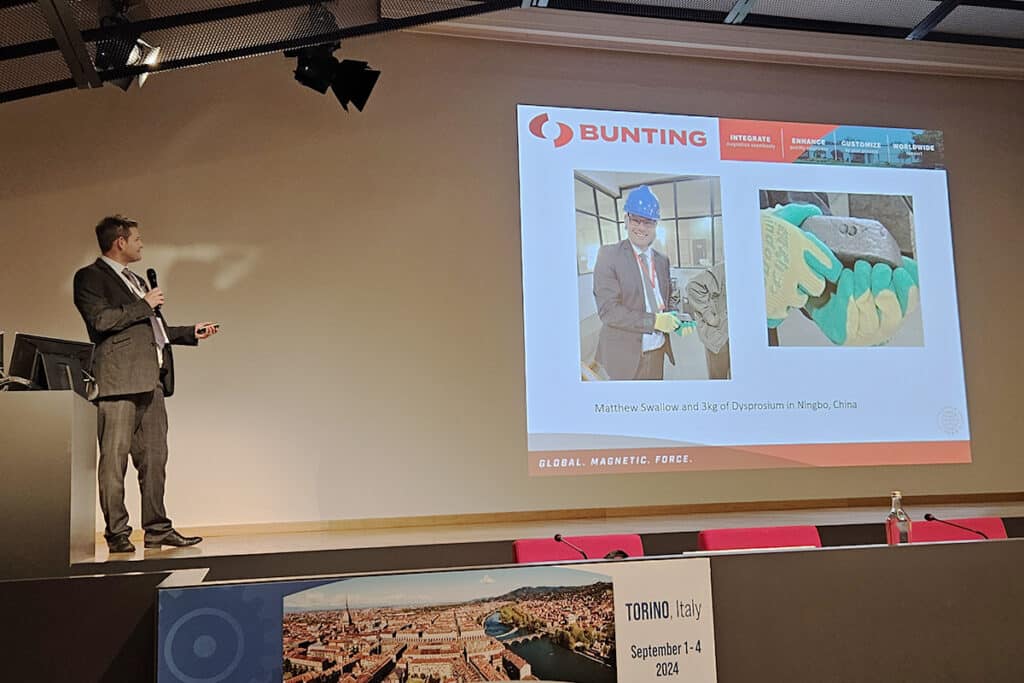Limiting Heavy Rare Earths Reliance for Neodymium Magnets
By Paul Fears | 30 September 2024
The growth in demand for neodymium-iron-boron (NdFeB) permanent magnets to maintain magnetic performance at high temperatures led to the inclusion of heavy rare earths such as dysprosium and terbium. The addition of these elements increases the coercivity of NdFeB i.e. it allows the magnets to operate at higher temperatures without losing their magnetic properties.

The price of NdFeB magnets can be difficult to project due to demand and political circumstance, with the vast majority of magnets being sourced from China. The addition of HREE into the pricing structure of a NdFeB magnet brings additional uncertainty due to the unstable and high price of HREEs such as dysprosium and terbium.
What are Heavy Rare Earths (HREEs)?
Heavy rare earths (HREEs) are a group of rare earth elements with higher atomic numbers and weights than light rare earths (LREEs). The elements that are considered HREEs are dysprosium, yttrium, terbium, holmium, erbium, thulium, ytterbium, and lutetium.

Dysprosium (Dy) and terbium (Tb) are the heavy rare earth elements used to increase the coercivity of NdFeB magnets. Applications for high coercivity and high resistance to de-magnetisation magnets include motors and generators, as used in high performance electric vehicles.
Dysprosium and terbium are genuinely rare rare earth materials. Nd is about 0.0033% of the earth’s crust and it is 5 times more abundant than Dy and 36 times more than Tb. They are also very difficult to extract, which makes their cost significantly more than Nd and reductions in the amount of Dy/Tb used generates a significant financial reward. The two HREEs are predominantly mined in the USA, China, Russia, Australia, Brazil, Sri Lanka, and India.
HREE-Free Neodymium Magnets
Due to concerns about the instability of HREE prices, the magnet industry has focused on developing HREE-free neodymium magnets. Whereas in 2014 the N42SH grade of NdFeB contained 2-4% Dy, Bunting now supplies peak grades of NdFeB that are Dy-free. These include up to N56, N52M, N50H, and N45SH.
“The operating parameters for NdFeB magnets are becoming increasingly challenging,” explained Matthew Swallow, Bunting’s Technical Manager. “The addition of heavy rare earths expanded the performance of the traditional NdFeB magnet, which was great for high end applications but would have led to long-term material shortages if new technologies were not adopted. Reducing the reliance on HREEs provides protection to the pricing instability of Dy and Tb. We are always keen to work with customers to help them design high-performance magnet assemblies using HREE-free NdFeB magnets. This close design collaboration limits potential future price risks of magnets including HREE.”
Grain Boundary Diffusion
One technique used to limit the amount of HREEs used in the production of a NdFeB magnet without losing the performance benefits is grain boundary diffusion.
Grain boundary diffused magnets employ a secondary manufacturing process to concentrate dysprosium or terbium into the grain boundaries of the magnet microstructure. This technique maintains the performance benefits of HREE, but uses less dysprosium or terbium. Thus, the price of the NdFeB magnet is more stable.



